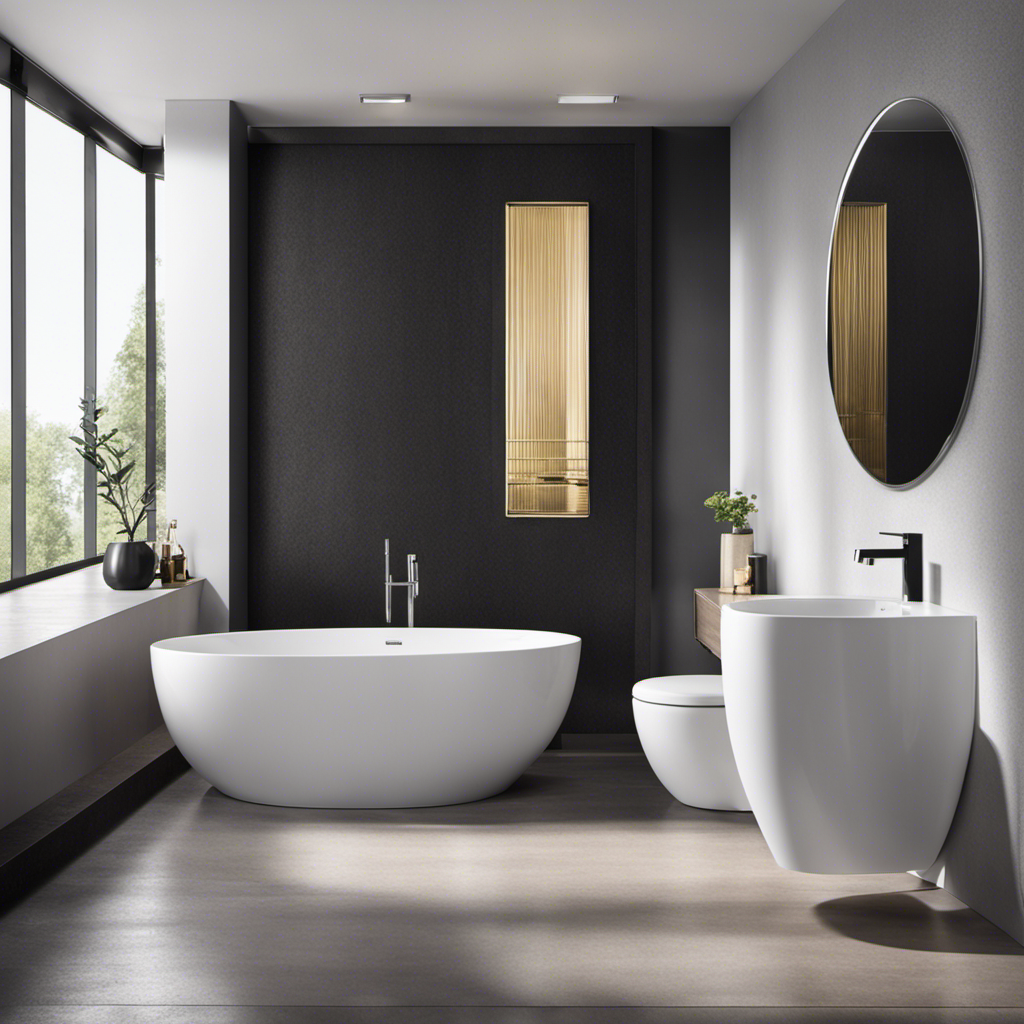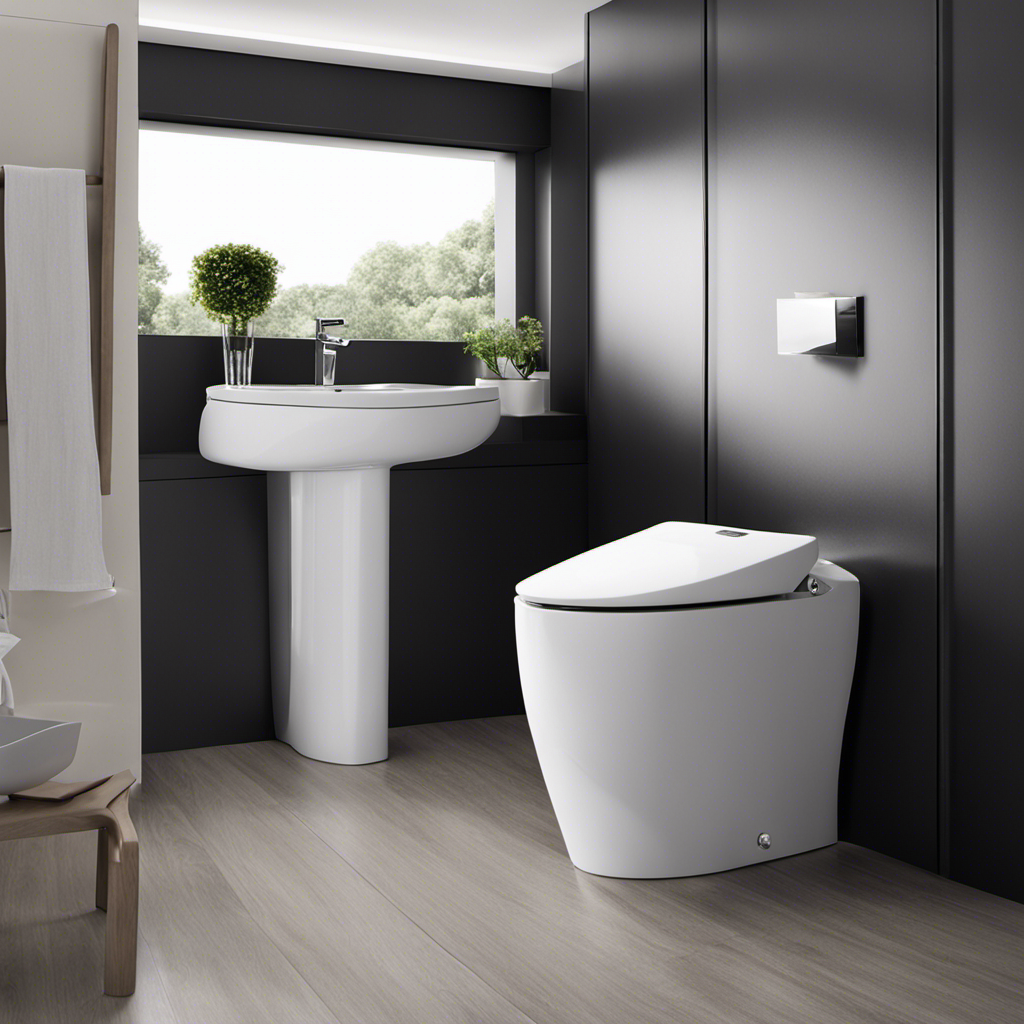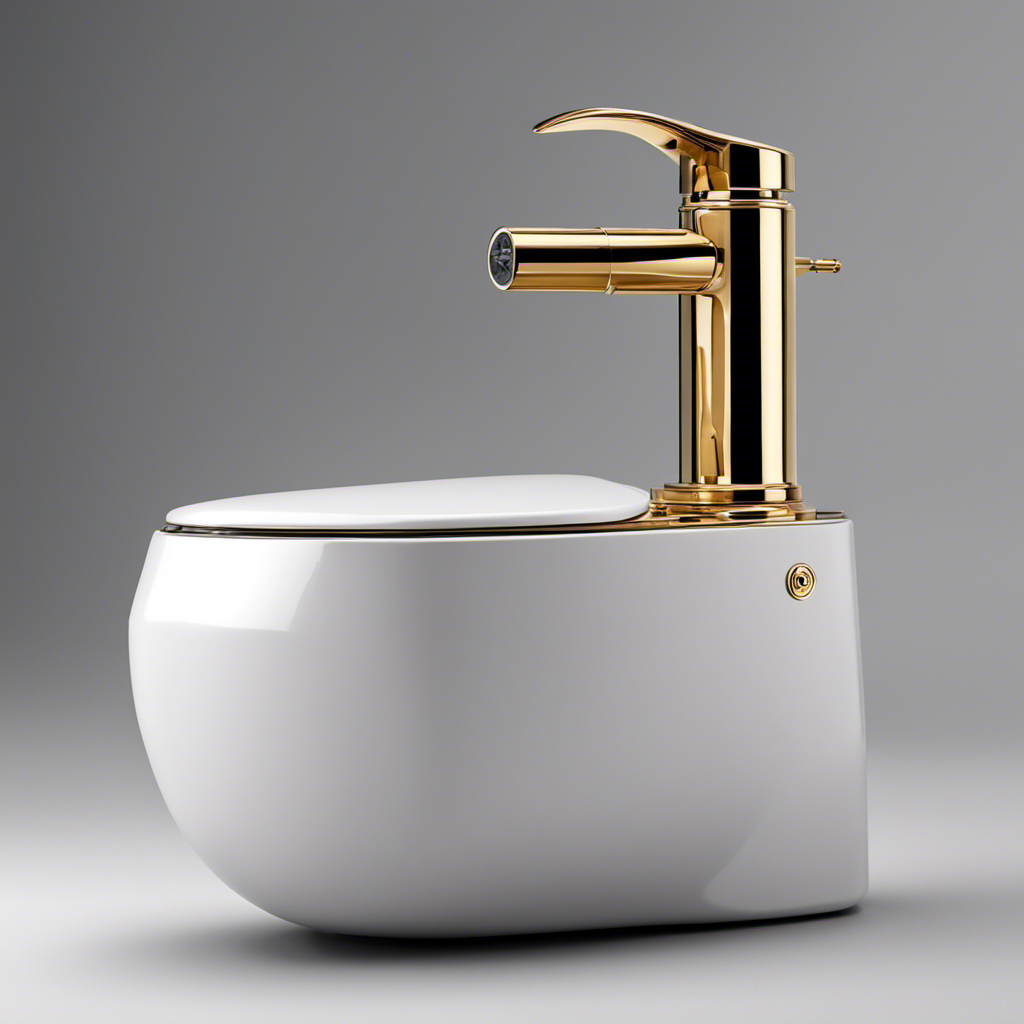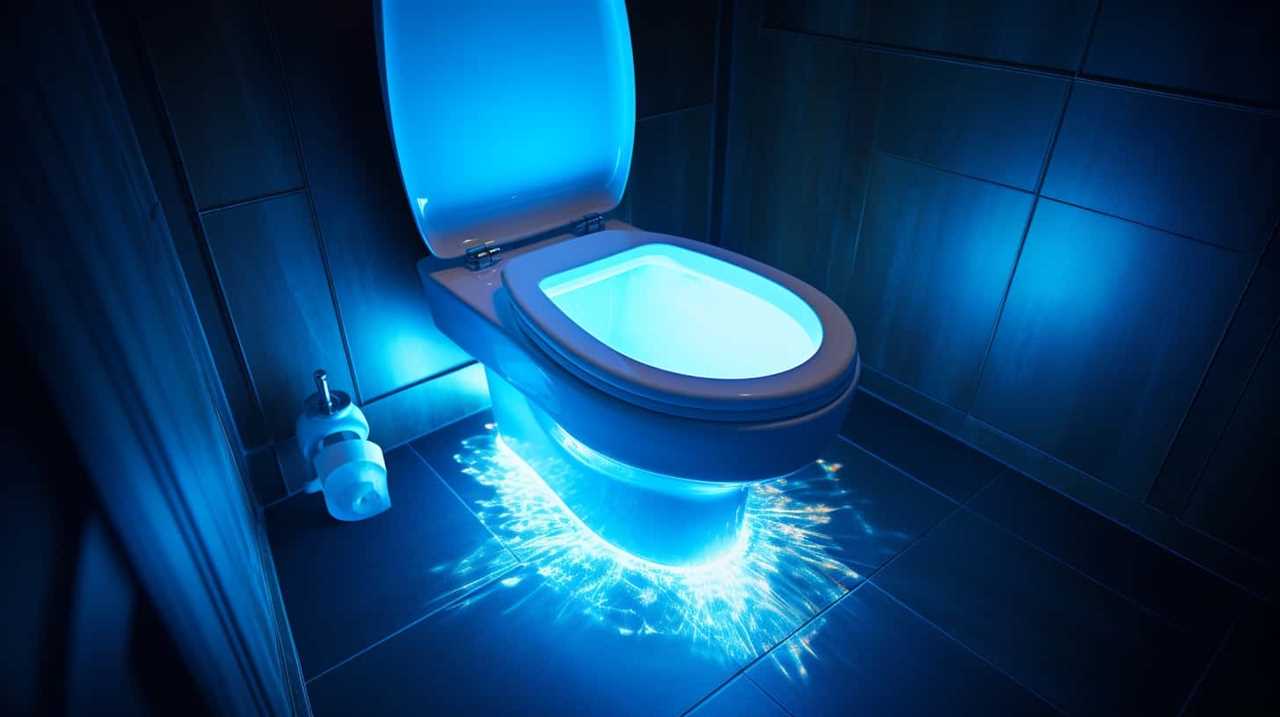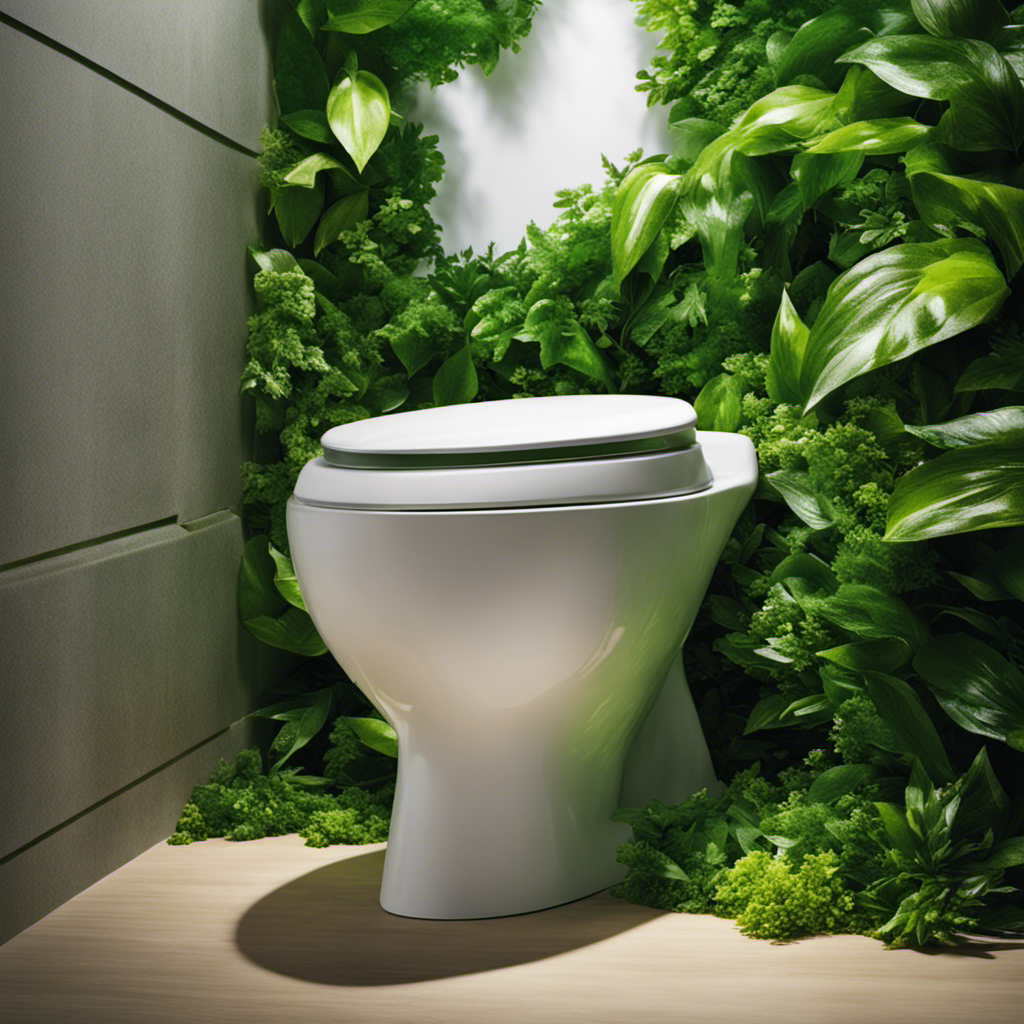Imagine a toilet that saves water without sacrificing performance. That’s exactly what a low flow toilet is like – a water-saving superhero in the bathroom!
In this article, I’ll walk you through the ins and outs of low flow toilets, explaining their advantages, how they work, and the different types available.
By the end, you’ll understand the numerous benefits of making the switch to a low flow toilet and have the knowledge to choose and install one with ease.
Let’s dive in!
Key Takeaways
- Low flow toilets save on water usage and reduce utility bills.
- They use significantly less water compared to traditional models, resulting in positive environmental impact by conserving water resources and reducing carbon footprint.
- Low flow toilets help conserve water, especially in areas with water scarcity, and decrease strain on water treatment facilities and the amount of wastewater processed.
- Switching to a low flow toilet offers benefits such as water conservation, cost savings, environmental impact reduction, and the potential for government incentives like rebates and tax credits.
Advantages of Low Flow Toilets
With a low flow toilet, you’ll save on water usage and reduce your utility bills. These toilets are designed to use significantly less water compared to traditional models, making them an excellent choice for water conservation.
On average, low flow toilets use about 1.6 gallons per flush, while older toilets can use up to 6 gallons. This significant reduction in water usage can have a positive environmental impact by conserving water resources and reducing strain on water treatment facilities.
Additionally, low flow toilets can also contribute to reducing your carbon footprint, as less water consumption means less energy is needed for water treatment and pumping.
Overall, investing in a low flow toilet is a practical and eco-friendly choice that benefits both your wallet and the environment.
How Low Flow Toilets Work
Toilets that use less water work by reducing the amount of water used during each flush. This is an important aspect of water conservation, as traditional toilets can use up to 6 gallons of water per flush, while low flow toilets typically use around 1.6 gallons or less.
By using less water, these toilets help to conserve this precious resource, especially in areas where water scarcity is a concern. Moreover, the reduced water usage also has a positive environmental impact by decreasing the strain on water treatment facilities and reducing the amount of wastewater that needs to be processed.
Overall, low flow toilets are a crucial component of sustainable living and can significantly contribute to water conservation efforts.
Now, let’s explore the different types of low flow toilets available in the market.
Types of Low Flow Toilets
There are various types of toilets available in the market that conserve water. These low flow toilets are designed to minimize water usage while still maintaining effective flushing power. One way they achieve this is through different flush mechanisms. Let’s take a look at some of these mechanisms in the table below:
| Flush Mechanism | Description |
|---|---|
| Gravity Flush | This is the most common type of flush mechanism, which uses the force of gravity to remove waste from the bowl. |
| Pressure Assist Flush | This mechanism uses compressed air or water to create a strong flushing action, resulting in efficient waste removal. |
| Dual Flush | Dual flush toilets have two buttons or handles, allowing users to choose between a full flush for solid waste and a reduced flush for liquid waste, further reducing water consumption. |
| Vacuum Assist Flush | This mechanism uses suction to remove waste from the bowl, resulting in a lower water usage compared to gravity flush toilets. |
| Washdown Flush | In this type of flush mechanism, water flows from the rim of the toilet bowl to create a powerful flushing action, effectively removing waste. This design allows for efficient water conservation. |
Benefits of Switching to a Low Flow Toilet
By switching to a low flow option, you can significantly reduce your water consumption while still maintaining an efficient flushing power. Here are four benefits of making the switch:
-
Water conservation: Low flow toilets use less water per flush, typically around 1.6 gallons or less. This means you can save thousands of gallons of water each year, contributing to overall water conservation efforts.
-
Cost savings: With reduced water consumption, you’ll see a noticeable decrease in your water bill. Low flow toilets can save you money in the long run, making them a cost-effective choice.
-
Environmental impact: By using less water, low flow toilets help reduce stress on local water sources and ecosystems. Conserving water also lowers energy consumption associated with water treatment and distribution, reducing carbon emissions.
-
Government incentives: Many states and municipalities offer rebates or tax incentives for installing low flow toilets. Taking advantage of these programs can further offset the cost of upgrading to a more water-efficient option.
Tips for Choosing and Installing a Low Flow Toilet
When choosing and installing a low flow option, consider the water consumption, cost savings, environmental impact, and government incentives. There are various toilet brands available in the market that offer low flow options to help conserve water. These toilets use advanced flushing mechanisms and design features to reduce water usage without compromising performance. By switching to a low flow toilet, you can save a significant amount of water and reduce your utility bills. Additionally, these toilets contribute to environmental conservation by minimizing water wastage. Government incentives, such as rebates and tax credits, are also available to encourage the adoption of water conservation techniques. To help you make an informed decision, here’s a comparison table of some popular low flow toilet brands:
| Brand | Water Consumption (GPF) | Features |
|---|---|---|
| Brand A | 1.28 | Dual flush technology |
| Brand B | 0.8 | Pressure-assisted flushing |
| Brand C | 1.0 | Water-efficient design |
| Brand D | 1.6 | ADA-compliant |
| Brand E | 0.6 | Compact size |
Consider these factors and choose a low flow toilet that suits your needs and preferences.
Conclusion
Overall, low flow toilets are a great option for conserving water and reducing your environmental impact. They work by using less water per flush, which can lead to significant water savings over time.
In fact, did you know that switching to a low flow toilet can save up to 7,000 gallons of water per year? That’s equivalent to the amount of water needed to fill a small swimming pool!
By choosing and installing a low flow toilet, you can make a difference in water conservation efforts while still enjoying a functional and efficient bathroom fixture.
